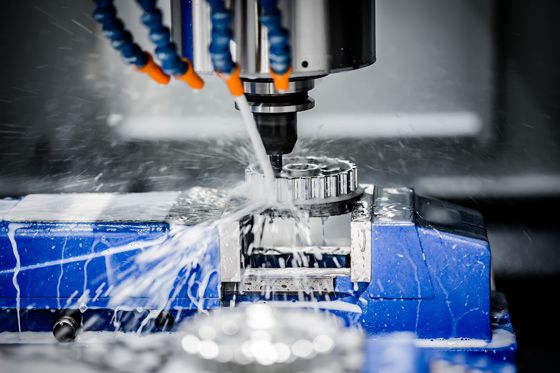What is CNC milling?
CNC milling is a manufacturing process that uses a cutting tool mounted on a rotating spindle to selectively remove material from a block of raw substrate. The workpiece is rigidly mounted to a table, and this table moves or rotates on different planes so the tool can work at many angles. Sophisticated CNC milling machines can have 5 or more axes of independent motion to make more complex shapes or to avoid having to move the workpiece to a separate machine.
CNC Milling Service
CNC mills or CNC milling machines produce parts of nearly any shape from soft metals like aluminum, harder metals like steel, and plastics such as acetal.
Advantages of CNC Milling
CNC milling has a number of advantages over other manufacturing processes.
Can produce quality parts of almost any shape or form
Cost-effective machining for prototyping and short runs
High dimensional tolerances are possible
Smooth finishes can be achieved
Can produce identical parts repeatedly
Milling machines can operate at high speeds, producing parts quickly.
A single machine can produce a wide variety of part shapes and sizes
Milling can be applied to many materials, including metals, plastics, and composites.
CNC machines can be programmed using computer-aided design (CAD) software, which makes it easy to create and change designs.
Design Consideration for Milling
When designing parts to be CNC milled, there are several tips to keep in mind:
CNC milling machines are capable of precision so try to use this to your advantage
Avoid deep pockets which are difficult to machine
Sharp inside corners are often difficult so consider using a radius
Apply chamfers to top edges to reduce sharpness and improve appearance.
Apply filters to the bottom of pockets to reduce the possibility of stress fractures if the component will be under stress.
Thin walls and other flimsy shapes can be difficult to machine as they may not hold up against the pressure of the cutting action.
Try to create shapes that do not have complex curves in more than one axis – as it may be difficult to hold during machining.
Types of CNC Milling
Plain Milling
Also known as slab or surface milling, this process involves the use of a cutting tool with a rotary axis that is parallel to the surface of the raw material. It is commonly used to create a flat surface.
Face Milling
This involves the rotary axis being perpendicular to the material’s surface. The tools used for this process tend to have more teeth than those used in plain milling, with the teeth on the edge of the tools being used to cut the raw material. Meanwhile, those in contact with the flat material are used for finishing.
Angular Milling
As the name suggests, this form of CNC Milling involves the tool’s rotary axis being at an angle to the raw material’s surface. These machines are used to provide a midpoint between Plain and Face Milling.
Form Milling
This type of milling is used to create parts that have no flat surfaces. The machines can be fitted with several different tools depending on the type of curve required.
What is CNC Milling Used For?
The sheer versatility of CNC Milling means it can be used for a variety of different projects. While the process is perhaps more commonly associated with car parts and aerospace components, it can be used for other purposes such as:
1. Cabinets
2. Signs
3. Instruments
4. Sculpture
5. Prototyping and Modelling
6. Woodworking
Given the multitude of tools used in the CNC Milling process, it is compatible with a wide range of materials including steel, aluminium, bronze, copper and titanium.

